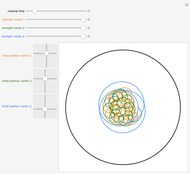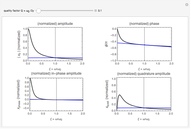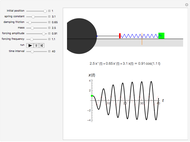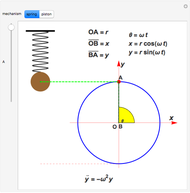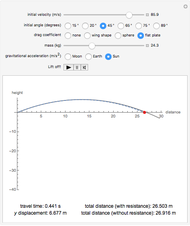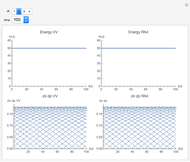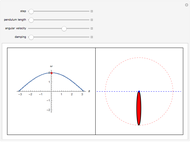Motions of a Simulated Damped Harmonic Oscillator

Requires a Wolfram Notebook System
Interact on desktop, mobile and cloud with the free Wolfram Player or other Wolfram Language products.
Consider a marble free to move inside a bowl. You release the marble at rest from an initial position on one of the walls. This Demonstration determines the subsequent trajectory of the marble. If there is no friction or air resistance, the marble continues to oscillate forever (undamped). If there is resistance, however, the oscillation eventually dies out. How fast it dies out and what the trajectory looks like depend on the properties of the medium.
[more]
Contributed by: Teun Zijp (December 2017)
Rijksuniversiteit Groningen
Open content licensed under CC BY-NC-SA
Snapshots
Details
Snapshot 1: emphasizes the difference between the undamped oscillator (in a vacuum) and the underdamped oscillator (in air); it can be reproduced by increasing the normal frequency  of the maximum
of the maximum
Snapshot 2: is a good overview of all four cases
Snapshot 3: emphasizes that the critically damped oscillator is the limit as the friction constant  approaches the normal frequency
approaches the normal frequency 
For snapshots 1–3, all oscillators have initial position  and initial velocity
and initial velocity  . This is analogous to a marble that is released at rest from one of the walls of a bowl. This is much like bungee jumping.
. This is analogous to a marble that is released at rest from one of the walls of a bowl. This is much like bungee jumping.
Snapshot 4: is a different experiment. Here, the initial position is  , but the initial velocity is
, but the initial velocity is  . This is analogous to a marble at the bottom of the bowl given a kick (for the undamped and underdamped cases) or a cannon that fires underwater (critically damped/overdamped).
. This is analogous to a marble at the bottom of the bowl given a kick (for the undamped and underdamped cases) or a cannon that fires underwater (critically damped/overdamped).
Reference
[1] T. Zijp. "TEZ Groningen." (Dec 13, 2017) tezgroningen.nl.
Permanent Citation







